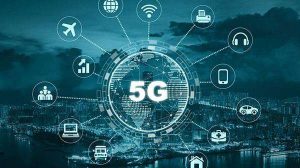Urbanization is one of the defining trends of the 21st century, with more than half of the world’s population now living in cities. To meet the growing demands of urban living, cities are turning to technology to create smarter, more efficient, and sustainable urban environments. This article delves into the rise of smart cities and how technology is transforming the way we live in urban areas.
1. What Are Smart Cities?
Smart cities are urban areas that leverage technology to enhance the quality of life for their residents while also addressing pressing challenges, such as traffic congestion, pollution, and resource management. These cities use data and connectivity to improve infrastructure, services, and governance.
2. The Role of IoT (Internet of Things)
At the heart of smart cities is the Internet of Things (IoT), which connects devices and systems to collect and exchange data. IoT sensors and devices are embedded throughout cities, monitoring and controlling various aspects of urban life. This data-driven approach enables smarter decision-making and more efficient resource management.
3. Efficient Transportation
One of the most visible transformations in smart cities is in transportation. Smart traffic lights adjust their timing based on real-time traffic data, reducing congestion. Electric buses and autonomous vehicles are becoming more common, reducing emissions and traffic accidents.
4. Sustainable Energy
Smart cities prioritize sustainable energy solutions. Solar panels, wind turbines, and energy-efficient buildings are part of the effort to reduce the carbon footprint. Energy grids are also becoming smarter, with better monitoring and distribution capabilities.
5. Data-Driven Governance
Data analytics plays a crucial role in smart city governance. Governments can make data-informed decisions on urban planning, resource allocation, and disaster response. Open data initiatives empower citizens with access to information about their city.
6. Improved Public Services
Smart cities use technology to enhance public services. Waste management systems are more efficient, with sensors in bins alerting collectors when they need emptying. Smart street lighting saves energy by adjusting brightness based on movement.
7. Healthcare and Education
Technology is also transforming healthcare and education in smart cities. Telemedicine and e-learning platforms provide accessible services, while healthcare data analytics help identify and address public health concerns.
8. Enhanced Safety and Security
Smart cities employ surveillance cameras, smart lighting, and emergency response systems to enhance safety and security. These technologies also aid in disaster preparedness and response.
9. Water Management
Water scarcity is a significant issue in many urban areas. Smart cities use technology to monitor and conserve water, detecting leaks in real time and optimizing water distribution.
10. Citizen Engagement
Smart cities engage their citizens in decision-making processes. Apps and online platforms allow residents to report issues, participate in urban planning, and provide feedback on city services.
11. Challenges and Concerns
The rise of smart cities is not without challenges. Concerns about data privacy, cybersecurity, and equitable access to technology must be addressed to ensure that smart cities benefit all residents.
Conclusion
Smart cities represent a fundamental shift in urban living, as technology transforms the way we experience and interact with our environment. As the world continues to urbanize, the adoption of smart city technologies will become increasingly important. The rise of smart cities offers a vision of urban living that is not only more convenient and efficient but also more sustainable, inclusive, and responsive to the needs of its residents. It is a promising future that combines the best of urban life with the power of technology.














Add Comment